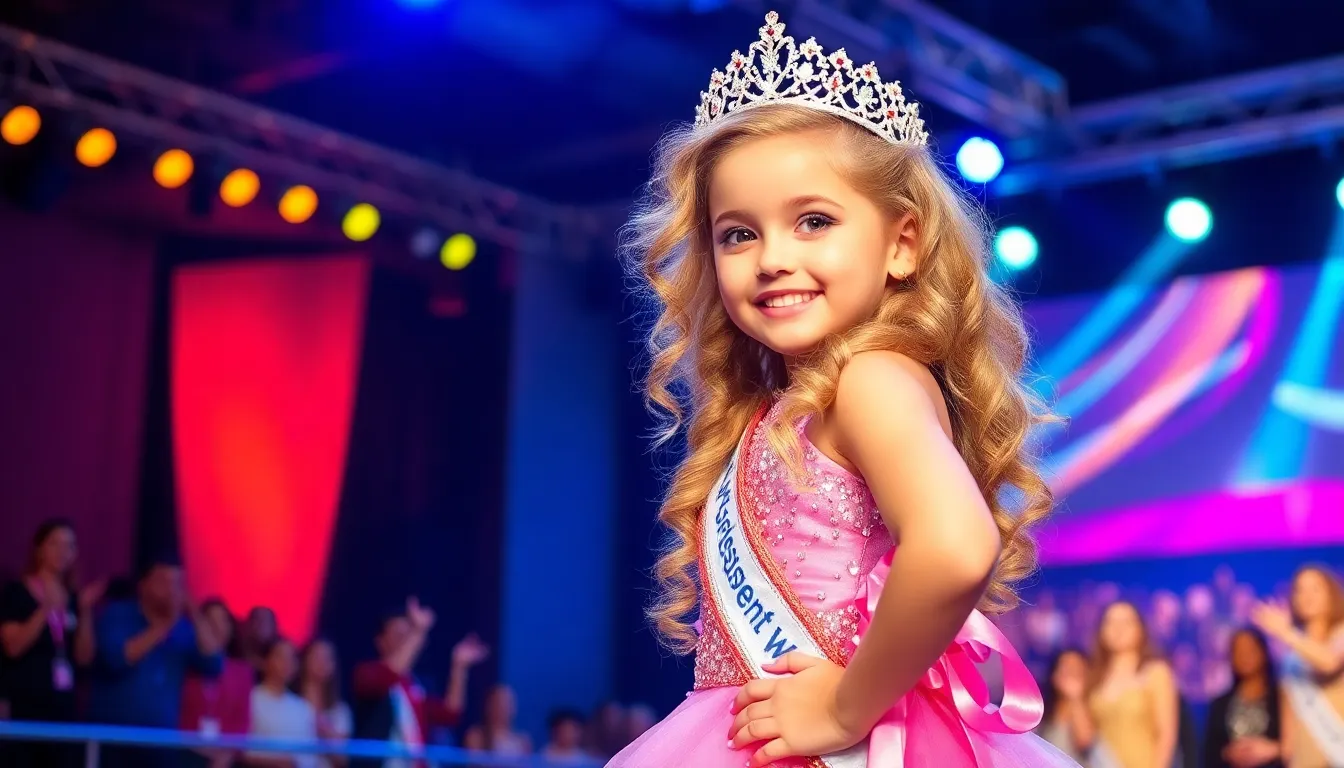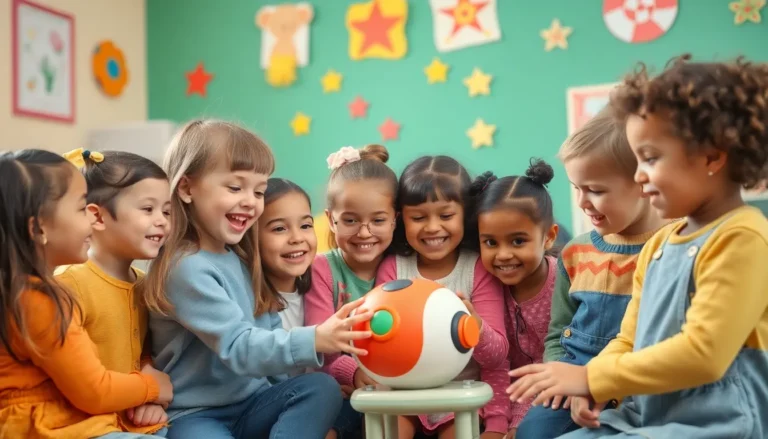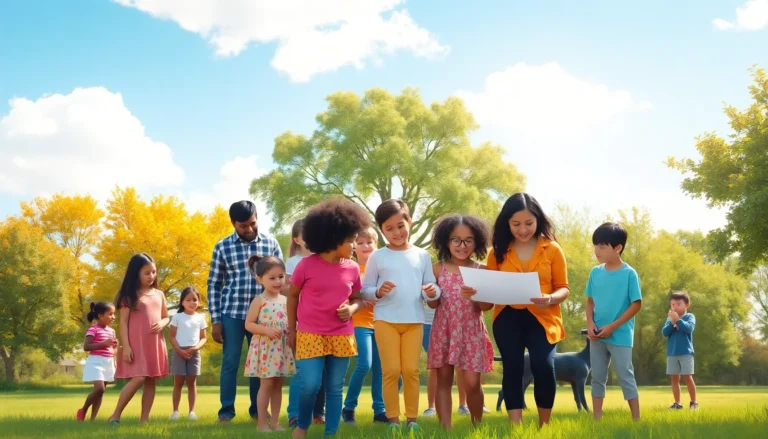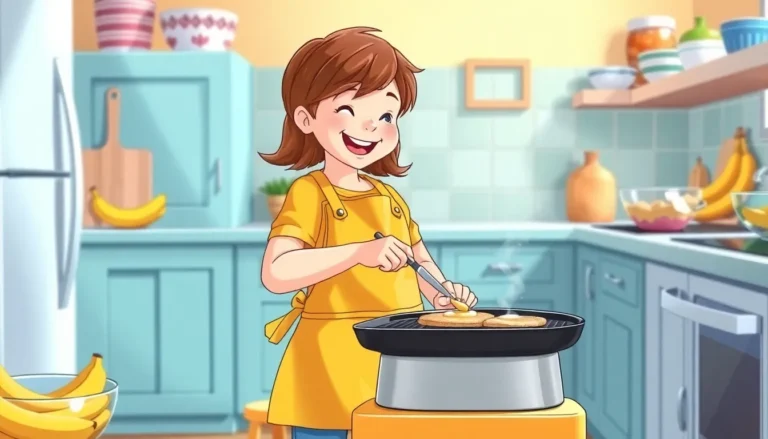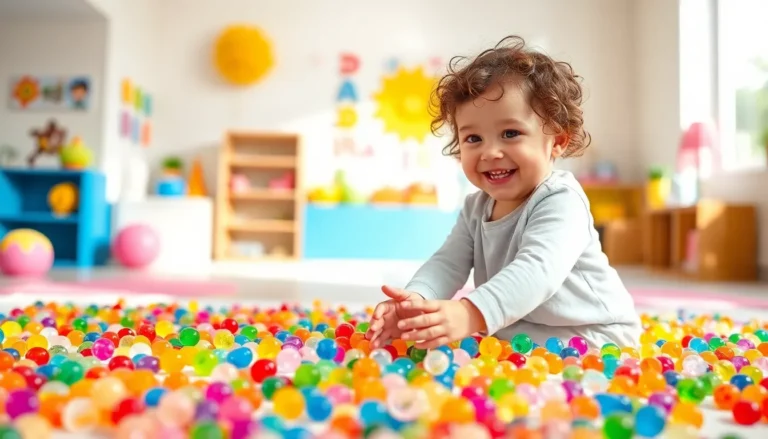Table of Contents
ToggleIn a world where glitter reigns supreme and tiny feet strut down the runway, “Toddlers & Tiaras” has taken the spotlight and turned the pageantry of childhood into a spectacle like no other. This reality show isn’t just about sparkly crowns and frilly dresses; it’s a wild ride through the competitive landscape of child beauty pageants, where pint-sized princesses and their ambitious parents collide in a whirlwind of sequins and sass.
Overview of Toddlers & Tiaras
“Toddlers & Tiaras” showcases the vibrant but competitive nature of child beauty pageants. Parents often invest considerable time and resources into preparing their children for these events. Contestants compete for various titles, asserting their capabilities in different categories such as talent, costume, and interview segments.
Drama unfolds as families navigate the pressures of the pageant world. Each episode features intense rivalries that shape the relationships between participants and their parents. Competitors face harsh scrutiny from judges and sometimes harsh comments from their peers. Fans notice the distinct differences in coaching styles, with some parents adopting a more hands-on approach while others take a step back.
Glamorous outfits play a crucial role in each pageant. Participants frequently wear elaborate costumes, from sparkling tiaras to extravagant dresses, helping them stand out on stage. Behind the glamour lies the reality of preparation, with many children undergoing rigorous training regimens.
Emotional highs and lows define the competition atmosphere. Winning can bring joy and celebration, while losing may lead to disappointment for both children and parents. Viewers often glimpse the impact of those emotions on young contestants, revealing vulnerabilities and personal growth throughout the series.
The show’s polarizing nature sparks conversations around parenting and the ethics of child pageantry. Critics argue it places undue pressure on children, whereas proponents highlight the opportunities for confidence-building and performance skills that pageants can provide.
The Evolution of Child Pageants
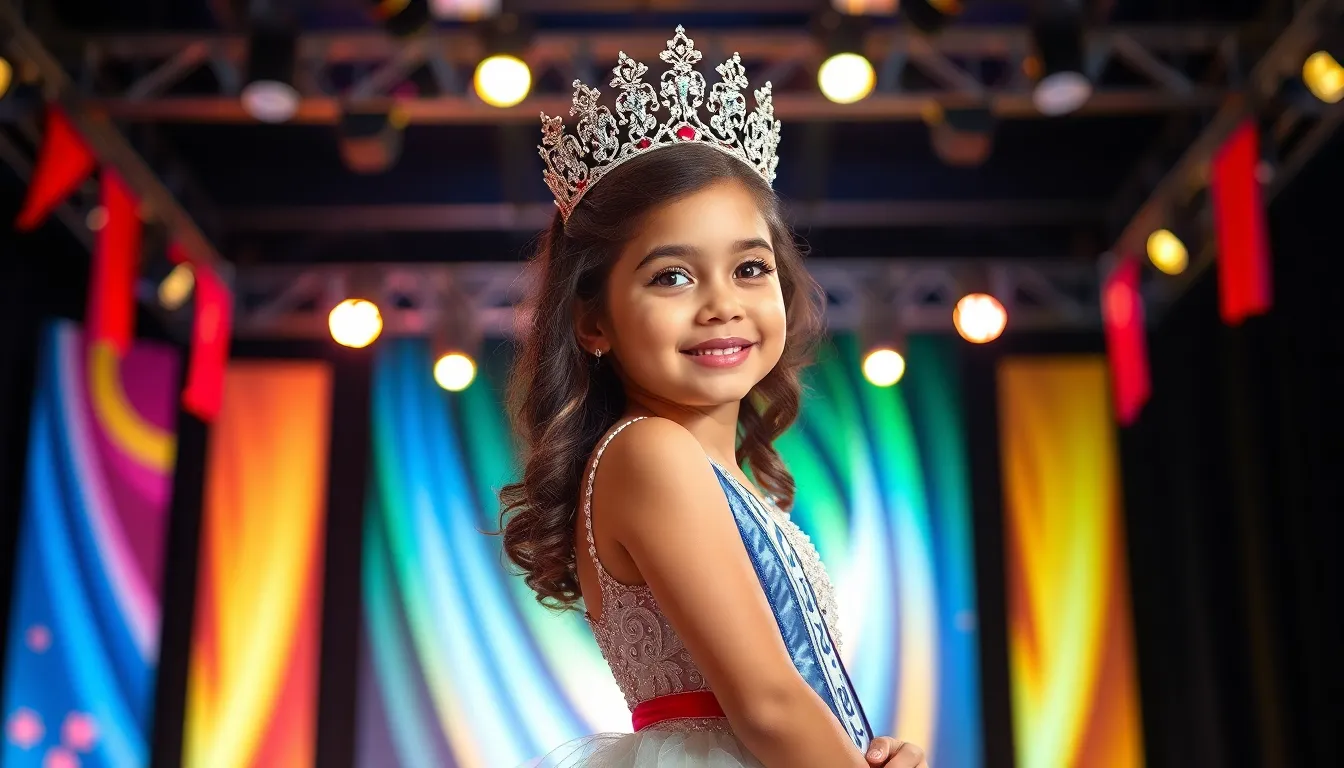
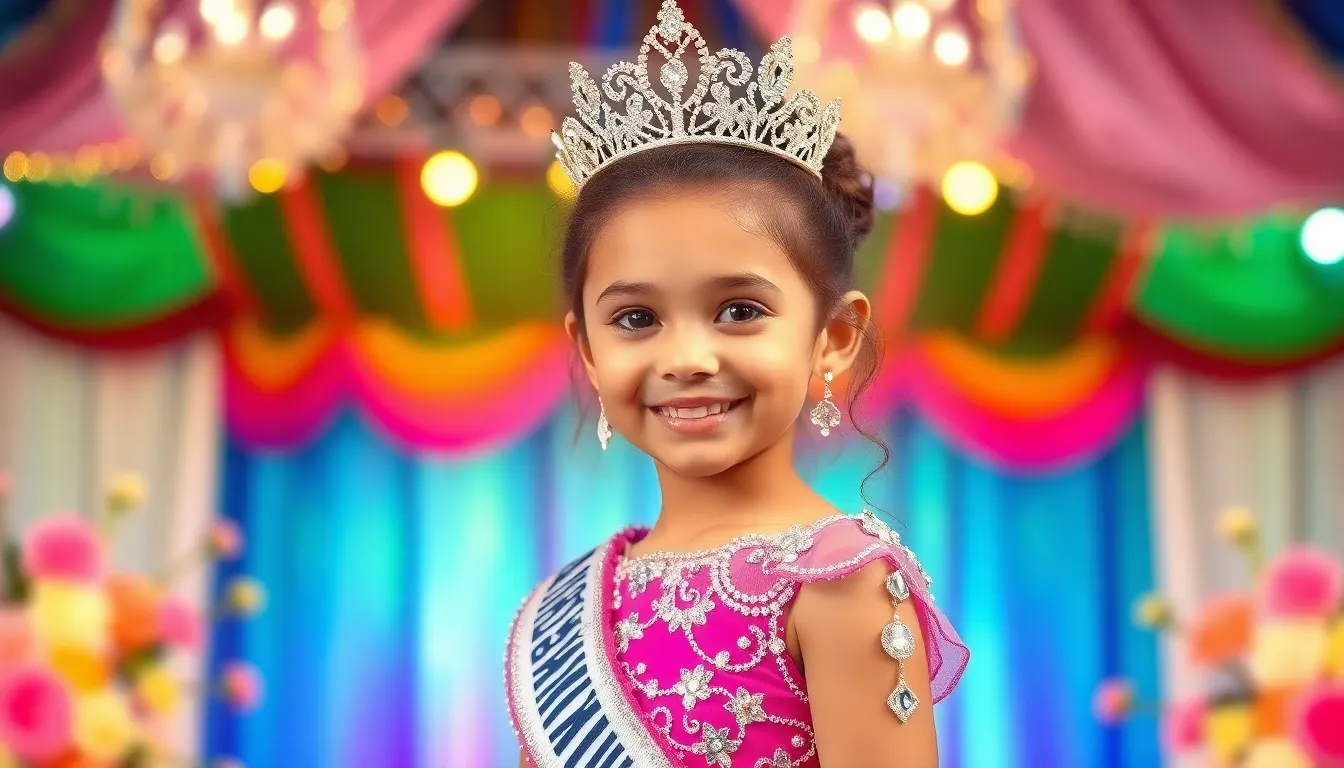
Child beauty pageants have undergone significant transformations over the years, reflecting broader societal changes and shifting cultural values.
History of Beauty Pageants
Beauty pageants date back to the early 20th century. In 1921, the first modern pageant, the Miss America contest, began in Atlantic City. Initially aimed at promoting tourism, pageants soon evolved, incorporating various categories like talent and evening wear. The 1960s saw the introduction of more child pageants, influenced by television broadcasts that popularized glamorous displays. Prominent figures, such as Bob Hope and Joan Crawford, helped shape perceptions of femininity through these events. By the 1990s, child pageants became mainstream, showcased on shows like “Toddlers & Tiaras.” The evolution of these events mirrored social attitudes toward beauty, youth, and competition.
Changes in Perception Over Time
Perception of child pageants has transformed substantially. Early pageants evoked fascination with glamor, often viewed as harmless entertainment. Critics emerged over time, raising concerns about psychological effects on children and the pressures of competition. Academic studies highlighted potential negative impacts, such as self-esteem issues and socialization challenges. Conversely, some argue that pageants provide valuable skills, including public speaking and poise. Parents often cite confidence-building experiences as key benefits. Social media has exacerbated debates, allowing real-time discussions about ethics within pageantry. Today, advocates emphasize empowerment while highlighting responsible participation for children in these events.
Impact on Participants
The reality show “Toddlers & Tiaras” significantly influences its young contestants and their families. Participants face unique challenges in the competitive pageant landscape.
Psychological Effects on Toddlers
Toddlers involved in beauty pageants experience mixed psychological effects. Some children develop increased self-confidence through performance opportunities. Others may face heightened anxiety due to the competitive environment and pressure to succeed. Emotional fluctuations become evident as joyful moments intertwine with disappointment. The intensity of competition can also lead to issues like perfectionism, where young participants feel they must constantly meet expectations. Increased visibility on platforms like social media adds another layer, making them susceptible to external scrutiny.
Family Dynamics and Pressures
Family dynamics shift significantly in the context of pageantry. Parents often invest considerable time, finances, and emotional energy into their children’s success. Sibling relationships may strain as competition arises for parental attention or financial resources. Some families find unity through shared experiences, bonding over the excitement of preparation and participation. In contrast, the pressure to perform can drive wedges between family members, leading to conflicts. Coaches and support systems play crucial roles, offering guidance while trying to maintain a healthy balance. The overall impact reflects complex interactions in navigating the high-stakes environment of child pageants.
Criticism and Controversy
The reality show “Toddlers & Tiaras” has faced substantial criticism regarding its impact on child contestants and the ethics of child beauty pageantry. Critics raise ethical concerns about the pressure placed on young children, arguing it promotes unrealistic beauty standards. Adults often invest significant resources, leading to the exploitation of kids for entertainment and prizes. Some child psychologists warn about the potential long-term psychological effects, such as anxiety and self-esteem issues. Parents navigating this world of competition might unintentionally overlook their children’s emotional well-being in pursuit of success.
Ethical Concerns
Ethical questions arise surrounding children’s participation in pageants. Many argue that exposing toddlers to intense scrutiny threatens their mental health and development. Additionally, parents might prioritize competition over their children’s happiness. Research shows exposure to environments emphasizing perfection can foster insecurities. Some parents defend pageants, citing confidence-building experiences and skills gained through participation. Balancing personal growth and ethical implications presents a significant challenge.
Media Representation and Influence
Media representation shapes public perceptions of child pageants and beauty ideals. “Toddlers & Tiaras” amplifies the allure of glamorous lifestyles, sparking interest in child beauty contests. However, this portrayal often overlooks the darker side of competition. Viewers may develop skewed notions of success and beauty based on sensationalized television depictions. Social media exacerbates these issues, with many children idolizing unrealistic standards. Influencers in this space can create added pressure, pushing children and parents further into the competitive scene. Sensationalized portrayals, while entertaining, can distort essential realities of child pageantry.

